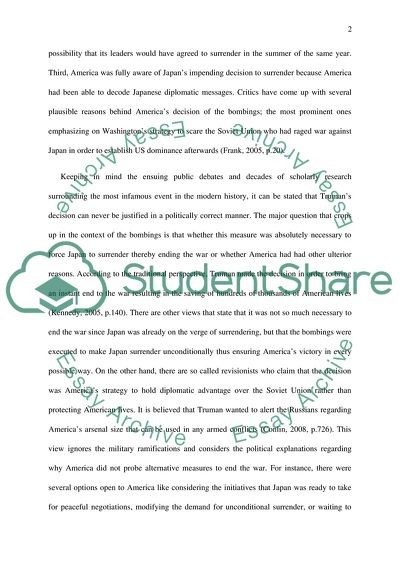Cite this document
(The Negative Effects of Atomic Bombs on Hiroshima and Nagasaki Assignment, n.d.)
The Negative Effects of Atomic Bombs on Hiroshima and Nagasaki Assignment. https://studentshare.org/history/1847668-the-negative-impacts-from-atomic-bombings-of-hiroshima-and-nagasaki-durling-the-secon-world-war
The Negative Effects of Atomic Bombs on Hiroshima and Nagasaki Assignment. https://studentshare.org/history/1847668-the-negative-impacts-from-atomic-bombings-of-hiroshima-and-nagasaki-durling-the-secon-world-war
(The Negative Effects of Atomic Bombs on Hiroshima and Nagasaki Assignment)
The Negative Effects of Atomic Bombs on Hiroshima and Nagasaki Assignment. https://studentshare.org/history/1847668-the-negative-impacts-from-atomic-bombings-of-hiroshima-and-nagasaki-durling-the-secon-world-war.
The Negative Effects of Atomic Bombs on Hiroshima and Nagasaki Assignment. https://studentshare.org/history/1847668-the-negative-impacts-from-atomic-bombings-of-hiroshima-and-nagasaki-durling-the-secon-world-war.
“The Negative Effects of Atomic Bombs on Hiroshima and Nagasaki Assignment”. https://studentshare.org/history/1847668-the-negative-impacts-from-atomic-bombings-of-hiroshima-and-nagasaki-durling-the-secon-world-war.


